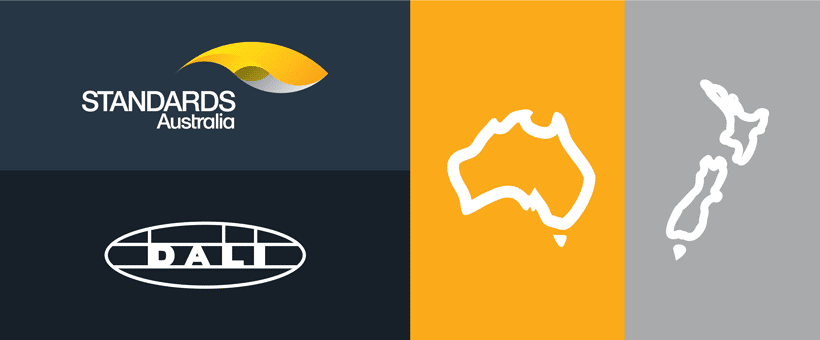In November 2020, DALI-2 was adopted as the first, and currently ONLY, Australian and New Zealand lighting control standard.
Understanding what having a lighting control standard actually means, and the specifics that AS/NZS 62386 includes have been surprisingly slow to percolate through the industry.
In this article we attempt to explain the reasons for the adoption of a local standard, what it actually covers, and what is required for a lighting control system to FULLY COMPLY with the standard.

What is DALI?
DALI is a lighting control standard defined under the European Standard IEC 62386 (and now adopted for Australia and New Zealand) for controlling electronic ballasts, transformers, LED’s, emergency lights and exit signs. IEC stands for International Electrotechnical Commission and is a non-profit organization. DALI was designed to replace traditional 1-10 V analogue systems and proprietary digital systems such as DSI (Digital Serial Interface).
The AS/NZS 62386 standard
The AS/NZS 62386 standard specifies that a digital addressable lighting interface (DALI) system should be used for lighting control. DALI is a standardized protocol for digital communication between lighting devices including lamps and switches, and lighting control equipment, such as sensors and controllers.
The adoption of the DALI-2 standards by AS/NZS 62386 means that lighting control systems in Australia and New Zealand should comply with the DALI protocol to ensure interoperability and cross-compatibility between different manufacturers’ products.
Having a local standard helps provide the New Zealand market with the tools required to deliver smarter and more modern buildings.
What does the standard cover?
The AS/NZS 62386 standard includes the categories below:
- Lighting Drivers – AS/NZS 62386-101
- Circadian Rhythm – AS/NZS 62386-209
- Switches – AS/NZS 62386-301/302
- Sensors – AS/NZS 62386-303/304
- Wireless – AS/NZS 62386-104
- Emergency – AS/NZS 62386-202
The New Zealand standards are available here, using 62386 as the search term. Each section of the standard is then listed and can be downloaded separately.
How to comply
For full compliance with the NZ standard for lighting control, a lighting control system (LCS) should support all parts of the DALI-2 standard.
Proprietary systems often claim to be compliant, but usually with only ‘part’ of the standard. A proprietary system uses its own proprietary inputs so cannot then comply with parts 301, 302, 303, and 304 of the standard which cover:
- 301 – push-button devices
- 302 – absolute input devices e.g. switches, sliders
- 303 – occupancy sensors (including presence and movement sensors)
- 304 – defines light sensors
Aims of the standard
DALI is a digital communication protocol known for its flexibility, allowing for complex lighting systems to be created with ease.
In adopting the DALI standard, the AS/NZS 62386 standard aims to improve the energy efficiency, flexibility, and controllability of lighting systems in Australia and New Zealand. DALI systems can provide granular control over lighting levels, colours, and effects, allowing for customised lighting schemes that can adapt to different activities, times of day, and occupancy patterns. DALI systems can also support advanced features such as daylight harvesting, occupancy sensing, and task tuning, which can further reduce energy consumption and improve user comfort.
AS/NZS 62386 also includes provisions for emergency lighting systems. Emergency lighting is required in many buildings to ensure that occupants can safely exit in the event of a power outage or other emergency. The standard outlines requirements for the design and installation of emergency lighting systems, including requirements for testing and maintenance.
Whether utilised as part of a full DALI-2 building-wide system or as a standard-alone emergency lighting network, using DALI-2 for the emergency lighting system ensures compliance but also provides benefits from significant savings in maintenance and testing. With automated monitoring, testing and reporting, compliance becomes so much easier.
Overall, AS/NZS 62386 provides a comprehensive framework for the design and installation of lighting control systems in Australia and New Zealand, with a focus on the DALI standard and the inclusion of emergency lighting systems. Compliance with the standard can help ensure that lighting systems are safe, reliable, and energy-efficient.
In summary, the AS/NZS 62386 standard for lighting control in Australia and New Zealand adopts the DALI standard as a means of achieving interoperability and compatibility between different lighting control products and systems. This adoption aims to improve the energy efficiency, flexibility, and controllability of lighting systems in buildings, thereby reducing energy consumption and improving user comfort.


